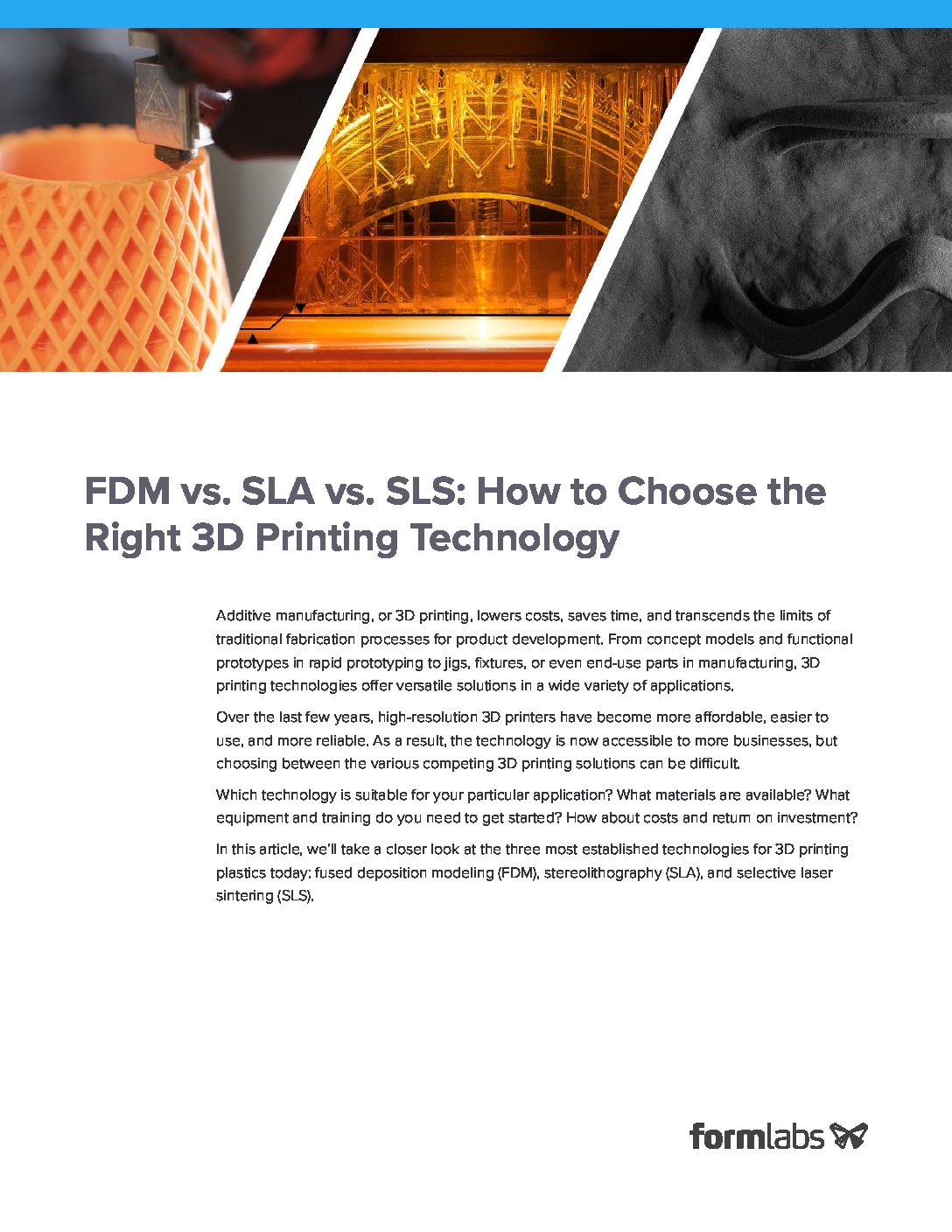Additive manufacturing, or 3D printing, lowers costs, saves time, and transcends the limits of traditional fabrication processes for product development. As the technology continues to develop, the number of uses and applications also continue to increase. Today, 3D printers are more affordable and reliable than ever, but it can be challenging to choose the best technology for your business and applications.
This guide breaks down two of the most common 3D printing technologies, fused deposition modeling (FDM) and stereolithography (SLA), and questions to ask in order to understand which is best for your business. We’ll cover an overview of each technology and available materials, common applications, required equipment and training, costs and return on investment, and more.
Download our guide to learn:
- The differences between FDM and SLA 3D printing technologies
- The main advantages, weaknesses, and requirements of each technology
- How to correctly account for the costs of each technology
- How to determine which type of printer is the most suitable for your application
